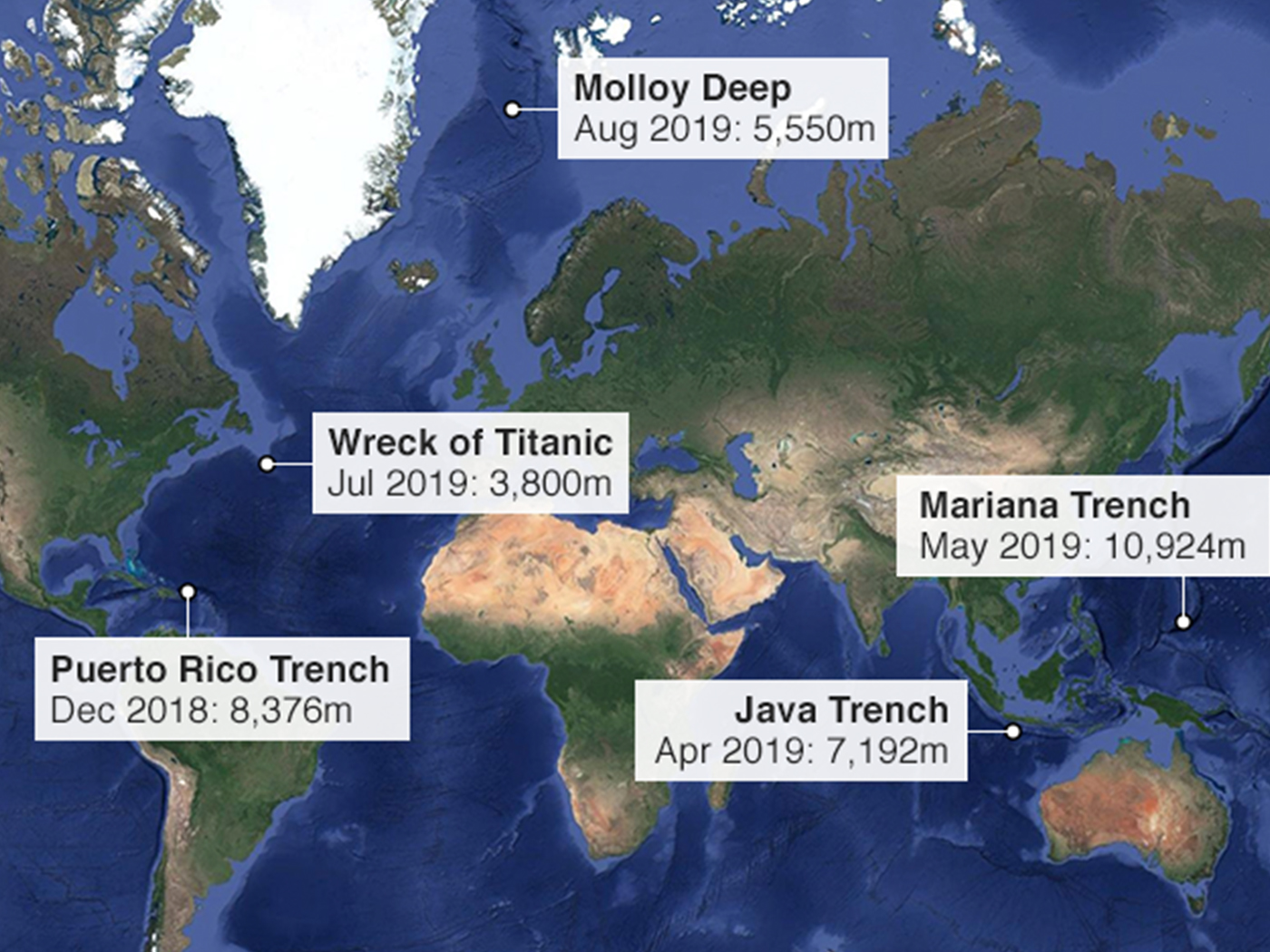In their unrelenting attempt to find evidence for extraterrestrial life, governments have spent many billions of dollars on space probes of various kinds and giant radio telescopes vainly searching the cosmos for intelligible signals from other worlds. On the popular level, reports of UFO sightings and alien landings have proliferated enormously in recent decades. The entertainment media have feasted on mega-profits from this mania (Star Wars, E.T., Contact, Independence Day, Star Trek, etc.) for many years, with no end in sight.
Why? What is the meaning of this fascination with the heavens and the possibility of life out there? It still seems completely impossible that "earthlings" could ever travel to other planets where there are intelligent beings—or that such beings could ever travel to Earth. Even if such creatures exist—for which there is not the slightest evidence as yet—they are just too far away.
The atheist, Isaac Asimov, wrote many best-selling novels about these other worlds, but as a scientist, he knew they were beyond reach.
Asimov also disposes of another popular myth—that one day we will journey to the stars. Only if we use antimatter as a fuel can we make a return trip to the nearest star, and that form of energy is likely to remain forever beyond our grasp. In any case, the effort would never justify the visit; our intrepid voyagers, or their descendants, would not arrive back before AD 50,000. Because we can never visit another star, so we can never be visited by aliens from another Solar System. Asimov, you're a spoilsport! 1
Yet both scientists and laymen persist in believing that the vast universe must be teeming with intelligent beings. Says the astronomer Jastrow:
Why would the Earth alone—an undistinguished body among trillions of similar ones—be chosen by nature or the deity as the only planet on whose soil the seeds of life have taken root? 2
No one has seen even one of these trillions of planets, of course—only a few questionable "perturbations" of a few stars. Nevertheless, evolutionary statistical speculation suggests they just might be there.
If one chooses to avoid speculation and stick solely with observations, one can ask the same question that Nobel physicist Enrico Fermi put forth in 1950: If the Galaxy is teeming with intelligent life, where are they? The sobering reality is that there is no observational evidence whatsoever for the existence of other intelligent beings anywhere in the universe. 3
Be that as it may, the space search is now focusing on finding life of any kind—intelligent or not—in the solar system. The moon probes turned out negatively and so did those of the Viking landers on Mars. The other planets seem too inhospitable for life even to be seriously considered, although hopes have recently been expressed for some of their satellites. The problem is that, for any form of life to be even possible, an abundance of liquid water is essential.
The earth has been called "the water planet," with more than two-thirds of its surface covered by water, but there is no liquid water at all on the moon or on Mars, as far as anyone can tell.
But since it is so important to evolutionists to find some evidence of extraterrestrial life, they are currently pinning their hopes on Mars. The announcement by David McKay and other NASA scientists in 1996 that fossil bacteria had been found in a meteorite from Mars has created a sensation that is being exploited to the full. But consider the following:
Even the premise that the meteorite came from Mars is disputable. . . . Several reasons for caution on the micro-fossils came from William Schoff at the NASA press conference: they are a hundred times smaller than any such fossils found on Earth, there is no measurement of the composition of the cells to show whether they are organic or not, and there is no sign of any cavities within the cells in which fluids necessary for life could reside. 4
The whole scenario is fascinating. Four billion years or more ago, there was—they say—enough water on Mars to permit minute organisms, much smaller than any ever seen on Earth, to evolve, then to die, become fossilized in a magma rock, which was somehow blasted out into space about 16 million years ago and then, amazingly, settled down on Earth about 13,000 years ago, to be discovered in Antarctic ice by meteorite hunters 12 years ago, finally to be recognized by NASA scientists just when they needed additional funding for more space ventures.
Trying to be politically correct, yet realistic, a recent summary of the evidence concludes as follows:
Even if some Martian organic matter is present, it may be impossible to disentangle its properties from the apparent overprint of terrestrial contamination. 5
But what about the water that was so necessary to get all this started? There is apparently no liquid water on Mars now. This important deficiency can be overcome, however, by assuming enough water used to be there to scour out great channels and form vast flood plains. Certain surface features on photographs taken by the Viking craft that orbited Mars in 1976 have been interpreted as formed by water in tremendous quantities in what would have amounted essentially to global flooding of the planet.
The recent Pathfinder "rover" is currently receiving even more enthusiastic media coverage than the Martian meteorite. It landed on a site assumed to be a vast flood plain, and proceeded to sample various rocks on the plain.
But team scientists were already doing impressionistic science on images from the site, finding evidence that it was swept by one of the largest floods—or mudslides—in solar system history. 6
Matthew Golombeck, of Pasadena's Jet Propulsion Laboratory, which organized the Pathfinder mission, and other NASA geologists now believe in a mammoth Martian flood long, long ago, and the flood water presumably would have made life possible there.
Golombeck and his colleagues believe that the first images confirm their suspicion that billions of years ago a great flood of a billion cubic meters per second swept the region for weeks, carrying a variety of rocks from distant highlands. 7
A newspaper account called it "a flood of Biblical proportions."
Which raises a question. Why are evolutionists so anxious to believe in a global flood on Mars, where there's no water at all, and no evidence but a few questionable land forms, while they flatly reject a global flood on Earth, where there is a great amount of water and an abundance of evidence?
When creationists talk about the Genesis flood, skeptics frequently ask:
"If the flood was global, where did all the water come from, and where did it go?" The Bible does provide an answer, of course: the water is in the ocean and changes in the atmosphere and geosphere both caused and removed the floodwaters.
But how about on Mars? Where did that water come from, and where did it go? They don't know.
Determining what could have unleashed the water, which was presumably stored beneath a dry surface, is one of the enduring mysteries of Mars. 8
The question would probably not even be raised if it were not for the urgent need to find extraterrestrial life somewhere. Similar "flood channels" and "flood plains" have been noted on Venus, but life would be impossible on Venus for other reasons, so its "flood" features have been attributed to rivers of lava.
But if it can just be shown that there was once life on Mars—any form of life—that would supposedly prove that life is a natural phenomenon that occurs whenever the conditions are right. Confirmation of the Mars report will demonstrate that the universe is teeming with life. 9
That would mean that life is a product of evolution and we don't need God to explain it. Or at least, that is the reasoning that many employ. Of course, theistic evolutionists might still argue that God could have allowed life to evolve on many planets if He so chose.
But it is not a question of what God could do. What He says is that our planet Earth is where He created life, Earth is where He Himself became man and died for our sins, and Earth is where He will reign forever over His whole creation.
The heaven, even the heavens, are the LORD'S; but the earth hath He given to the children of men (Psalm 115:16).
God has other purposes for the stars, and other planets, if they exist, and we shall have eternity to learn about them.
And they that be wise shall shine as the brightness of the firmament; and they that turn many to righteousness as the stars forever and ever (Daniel 12:3).
REFERENCES
1 John Emsley, in a review of The Relativity of Wrong, by Isaac Asimov (Oxford University Press, 1988). New Scientist (Vol. 122, April 8, 1989), p. 60.
2 Robert Jastrow, "What Are the Chances for Life?" Sky and Telescope (June 1997), p. 62.
3 Robert Naeye, "O.K. Where Are They?" Astronomy (Vol. 24, July 1996), p. 42.
4 Monica Grady, Ian Wright and Colin Pillinger, "Opening a Martian Can of Worms." Nature (Vol. 382, August 14, 1996), p. 575.
5 Harry V. McSween, J. "Evidence for Life in a Martian Meteorite?" Geotimes (Vol. 7, July 1997). D. 5
6 Richard A. Kerr, "Pathfinder Strikes a Rocky Bonanza." Science (Vol. 277, July 11, 1997), p. 173.
7 Kerr, op cit., p. 173.
8 Ibid.
9 Robert Jastrow, op cit., p. 63.
* Dr. Henry Morris is Founder and President Emeritus of ICR.






















